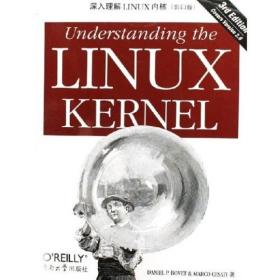
深入理解LINUX内核
¥ 43.65 4.5折 ¥ 98 九五品
仅1件
河北廊坊
认证卖家担保交易快速发货售后保障
作者Daniel、Marco Cesati 著
出版社东南大学出版社
出版时间2006-04
版次3
装帧平装
货号A2
上书时间2024-12-01
- 在售商品 暂无
- 平均发货时间 12小时
- 好评率 暂无
- 最新上架
商品详情
- 品相描述:九五品
图书标准信息
- 作者 Daniel、Marco Cesati 著
- 出版社 东南大学出版社
- 出版时间 2006-04
- 版次 3
- ISBN 9787564102760
- 定价 98.00元
- 装帧 平装
- 开本 16开
- 纸张 其他
- 页数 923页
- 原版书名 Understanding the Linux Kernel
- 【内容简介】
-
为了彻底理解是什么使得Linux能正常运行以及其为何能在各种不同的系统中运行良好,你需要深入研究内核最本质的部分。内核处理CPU与外界间的所有交互,并且决定哪些程序将以什么顺序共享处理器时间。它如此有效地管理有限的内存,以至成百上千的进程能高效地共享系统。它熟练地统筹数据传输,这样CPU不用为等待速度相对较慢的硬盘而消耗比正常耗时更长的时间。
《深入理解Linux内核,第三版》指导你对内核中使用的最重要的数据结构、算法和程序设计诀窍进行一次遍历。通过对表面特性的探究,作者给那些想知道自己机器工作原理的人提供了颇有价值的见解。书中讨论了Intel特有的重要性质。相关的代码片段被逐行剖析。然而,本书涵盖的不仅仅是代码的功能,它解释了Linux以自己的方式工作的理论基础。
本书将使你了解Linux的所有内部工作,它不仅仅是一个理论上的练习。你将学习到哪些情况下Linux性能最佳,并且你将看到,在大量的不同环境里进行进程调度、文件存取和内存管理时,它如何满足提供良好的系统响应的需要。这本书将帮助你充分利用Linux系统。 - 【目录】
-
Preface
TheAudienceforThisBook
OrganizationoftheMaterial
LevelofDescription
OverviewoftheBook
BackgroundInformation
ConventionsinThisBook
HowtoContactUs
Safari?Enabled
Acknowledgments
Chapter1.Introduction
Section1.1.LinuxVersusOtherUnix-LikeKernels
Section1.2.HardwareDependency
Section1.3.LinuxVersions
Section1.4.BasicOperatingSystemConcepts
Section1.5.AnOverviewoftheUnixFilesystem
Section1.6.AnOverviewofUnixKernels
Chapter2.MemoryAddressing
Section2.1.MemoryAddresses
Section2.2.SegmentationinHardware
Section2.3.SegmentationinLinux
Section2.4.PaginginHardware
Section2.5.PaginginLinux
Chapter3.Processes
Section3.1.Processes,LightweightProcesses,andThreads
Section3.2.ProcessDescriptor
Section3.3.ProcessSwitch
Section3.4.CreatingProcesses
Section3.5.DestroyingProcesses
Chapter4.InterruptsandExceptions
Section4.1.TheRoleofInterruptSignals
Section4.2.InterruptsandExceptions
Section4.3.NestedExecutionofExceptionandInterruptHandlers
Section4.4.InitializingtheInterruptDescriptorTable
Section4.5.ExceptionHandling
Section4.6.InterruptHandling
Section4.7.SoftirqsandTasklets
Section4.8.WorkQueues
Section4.9.ReturningfromInterruptsandExceptions
Chapter5.KernelSynchronization
Section5.1.HowtheKernelServicesRequests
Section5.2.SynchronizationPrimitives
Section5.3.SynchronizingAccessestoKernelDataStructures
Section5.4.ExamplesofRaceConditionPrevention
Chapter6.TimingMeasurements
Section6.1.ClockandTimerCircuits
Section6.2.TheLinuxTimekeepingArchitecture
Section6.3.UpdatingtheTimeandDate
Section6.4.UpdatingSystemStatistics
Section6.5.SoftwareTimersandDelayFunctions
Section6.6.SystemCallsRelatedtoTimingMeasurements
Chapter7.ProcessScheduling
Section7.1.SchedulingPolicy
Section7.2.TheSchedulingAlgorithm
Section7.3.DataStructuresUsedbytheScheduler
Section7.4.FunctionsUsedbytheScheduler
Section7.5.RunqueueBalancinginMultiprocessorSystems
Section7.6.SystemCallsRelatedtoScheduling
Chapter8.MemoryManagement
Section8.1.PageFrameManagement
Section8.2.MemoryAreaManagement
Section8.3.NoncontiguousMemoryAreaManagement
Chapter9.ProcessAddressSpace
Section9.1.TheProcesssAddressSpace
Section9.2.TheMemoryDescriptor
Section9.3.MemoryRegions
Section9.4.PageFaultExceptionHandler
Section9.5.CreatingandDeletingaProcessAddressSpace
Section9.6.ManagingtheHeap
Chapter10.SystemCalls
Section10.1.POSIXAPIsandSystemCalls
Section10.2.SystemCallHandlerandServiceRoutines
Section10.3.EnteringandExitingaSystemCall
Section10.4.ParameterPassing
Section10.5.KernelWrapperRoutines
Chapter11.Signals
Section11.1.TheRoleofSignals
Section11.2.GeneratingaSignal
Section11.3.DeliveringaSignal
Section11.4.SystemCallsRelatedtoSignalHandling
Chapter12.TheVirtualFilesystem
Section12.1.TheRoleoftheVirtualFilesystem(VFS)
Section12.2.VFSDataStructures
Section12.3.FilesystemTypes
Section12.4.FilesystemHandling
Section12.5.PathnameLookup
Section12.6.ImplementationsofVFSSystemCalls
Section12.7.FileLocking
Chapter13.I/OArchitectureandDeviceDrivers
Section13.1.I/OArchitecture
Section13.2.TheDeviceDriverModel
Section13.3.DeviceFiles
Section13.4.DeviceDrivers
Section13.5.CharacterDeviceDrivers
Chapter14.BlockDeviceDrivers
Section14.1.BlockDevicesHandling
Section14.2.TheGenericBlockLayer
Section14.3.TheI/OScheduler
Section14.4.BlockDeviceDrivers
Section14.5.OpeningaBlockDeviceFile
Chapter15.ThePageCache
Section15.1.ThePageCache
Section15.2.StoringBlocksinthePageCache
Section15.3.WritingDirtyPagestoDisk
Section15.4.Thesync(),fsync(),andfdatasync()SystemCalls
Chapter16.AccessingFiles
Section16.1.ReadingandWritingaFile
Section16.2.MemoryMapping
Section16.3.DirectI/OTransfers
Section16.4.AsynchronousI/O
Chapter17.PageFrameReclaiming
Section17.1.ThePageFrameReclaimingAlgorithm
Section17.2.ReverseMapping
Section17.3.ImplementingthePFRA
Section17.4.Swapping
Chapter18.TheExt2andExt3Filesystems
Section18.1.GeneralCharacteristicsofExt2
Section18.2.Ext2DiskDataStructures
Section18.3.Ext2MemoryDataStructures
Section18.4.CreatingtheExt2Filesystem
Section18.5.Ext2Methods
Section18.6.ManagingExt2DiskSpace
Section18.7.TheExt3Filesystem
Chapter19.ProcessCommunication
Section19.1.Pipes
Section19.2.FIFOs
Section19.3.SystemVIPC
Section19.4.POSIXMessageQueues
Chapter20.ProgramExZecution
Section20.1.ExecutableFiles
Section20.2.ExecutableFormats
Section20.3.ExecutionDomains
Section20.4.TheexecFunctions
AppendixA.SystemStartup
SectionA.1.PrehistoricAge:theBIOS
SectionA.2.AncientAge:theBootLoader
SectionA.3.MiddleAges:thesetup()Function
SectionA.4.Renaissance:thestartup_32()Functions
SectionA.5.ModernAge:thestart_kernel()Function
AppendixB.Modules
SectionB.1.ToBe(aModule)orNottoBe?
SectionB.2.ModuleImplementation
SectionB.3.LinkingandUnlinkingModules
SectionB.4.LinkingModulesonDemand
Bibliography
BooksonUnixKernels
BooksontheLinuxKernel
BooksonPCArchitectureandTechnicalManualsonIntelMicroprocessors
OtherOnlineDocumentationSources
ResearchPapersRelatedtoLinuxDevelopment
AbouttheAuthors
Colophon
Index
点击展开
点击收起
相关推荐
— 没有更多了 —




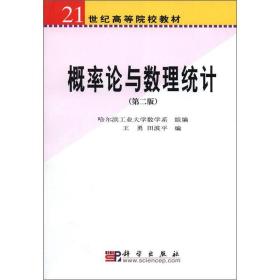




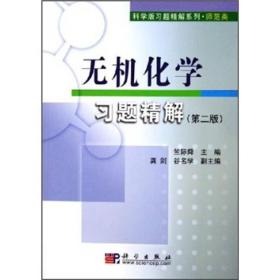





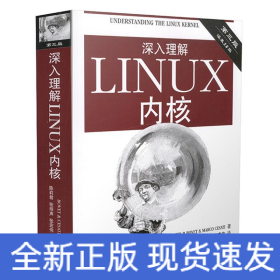

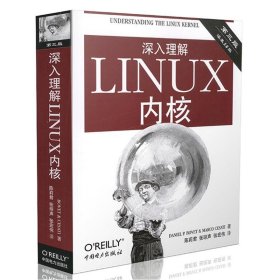


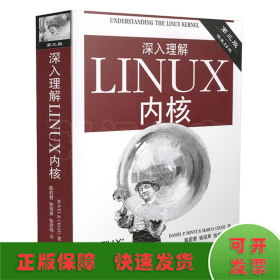
以下为对购买帮助不大的评价